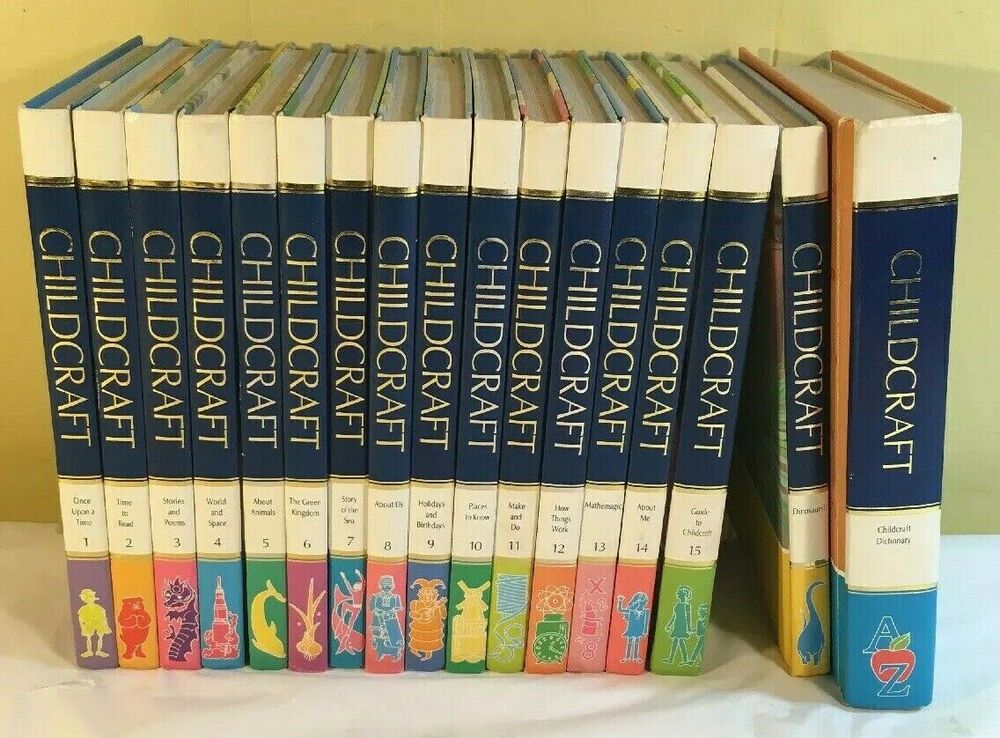Purpose of the project
Childcraft was first published in 1934. Since then it has undergone substantial revision several times. This edition is a 15-volume resource library designed especially for preschool and primary-grade children and
for the older child who needs high-interest, easy-to-read materials.
Childcraft also serves as a resource for parents, teachers, and librarians.
Preface
Childcraft was first published in 1934. Since then it has undergone
substantial revision several times. This edition is a 15-volume resource
library designed especially for preschool and primary-grade children and
for the older child who needs high-interest, easy-to-read materials.
Childcraft also serves as a resource for parents, teachers, and
librarians.
Outstanding educational and child guidance specialists serve on the
Childcraft Editorial Advisory Board. This group works with the editors
and artists in selecting and preparing the contents of these volumes.
Childcraft concentrates on broad areas of children’s interests that
have been identified through research and direct observation of
children.
In addition, Childcraft relates to broad areas of the school
curriculum. Volumes 1,2, and 3 relate to literature and language arts;
Volumes 4, 5, 6, and 7 to science and natural history; Volumes 8, 9, and
10 to social studies; Volume 11 to creative activities and the arts;
Volumes 12 and 13 to physical sciences and mathematics; and Volume 14 to
self-understanding. Of course, Volume 15 is designed primarily to serve
parents and teachers.
Throughout Childcraft, the easy-to-read text is combined with
colorful, appealing illustrations that make the material not only fun to
read, but also fun to look at. Nearly every graphic technique appears
somewhere in Childcraft. The illustrators include many of the world’s
top-ranking artists and photographers. Among the many outstanding-
artists are winners of the Caldecott Medal, presented annually by the
Association for Library Service to Children of the American Library
Association “for the most distinguished American picture book for
children”; the Kate Greenaway Medal, awarded by the Library Association
(British) for distinguished work in the illustration of children’s
books; and, since 1966, the Hans Christian Andersen International
Children’s Book Medal honoring an illustrator for “an important
international contribution to juvenile literature.”
Childcraft is designed to encourage the young child to open doors to
life and learning. The volumes also help start the child on a lifelong-
adventure of enrichment through books. For more information on using
Childcraft effectively, see Volume 15.
The Editors and Artists
Language
Childcraft was written in a clear and pleasant language that facilitated comprehension and created in children’s minds a desire to acquire new knowledge.
The first three volumes offered the reader a brief summary of children’s literature. Volume 1, Once upon a time, contains a selection of compositions in verse by classic and contemporary authors who have excelled in this difficult specialty. In volume 2, Time to read, some of the masterpieces of universal narrative are collected. Volume 3, Stories and Poems, collects stories from the four continents.
Volumes 4 to 14 are informative and accomplish the difficult task of exposing complicated concepts in a simple manner. The answers children ask for cannot always be given in simple words. Nevertheless, the editors have managed to maintain a clear language and an appealing style, capable of captivating your attention. When it has been necessary to use a technicality – to call things by their proper names – this has been done, taking care to clarify it in context and sometimes including its definition in a final section of Difficult Words.
Drawings and photographs
It was not enough to select topics appropriate to the interests of the children’s audience or to present them in simple and appropriate language. Something else was needed. In Childcraft it was solved with drawings and photographs. Thousands of illustrations, most of them in color, helped to understand the text.
A good illustration explains as well or better than the most perfect text. For example, in Childcraft a drawing has been used to show that an electricity switch acts as a drawbridge, that an airplane flying at supersonic speed produces a loud sound wave, how water runs out of houses without the bad smell returning to them, why a doorbell rings when the button is pressed, etc. The imagination is helped by these drawings, curiosity is satiated, and the child always comes to this conclusion: “At last I see it clearly. I had never been able to understand them before.
Interior Plan
The contents of the first three volumes were arranged in order from least to most difficult, so that the narratives were only collected by subject when possible. Thus, in volume 2, fables were separated from fairy tales and fairy tales from myths and legends, etc.
Volumes 4 to 14 were conceived differently. Each double-page spread formed a complete unit and, in turn, was part of a general chapter on the same subject. Each of these general chapters consisted of 10 to 15 double pages.

